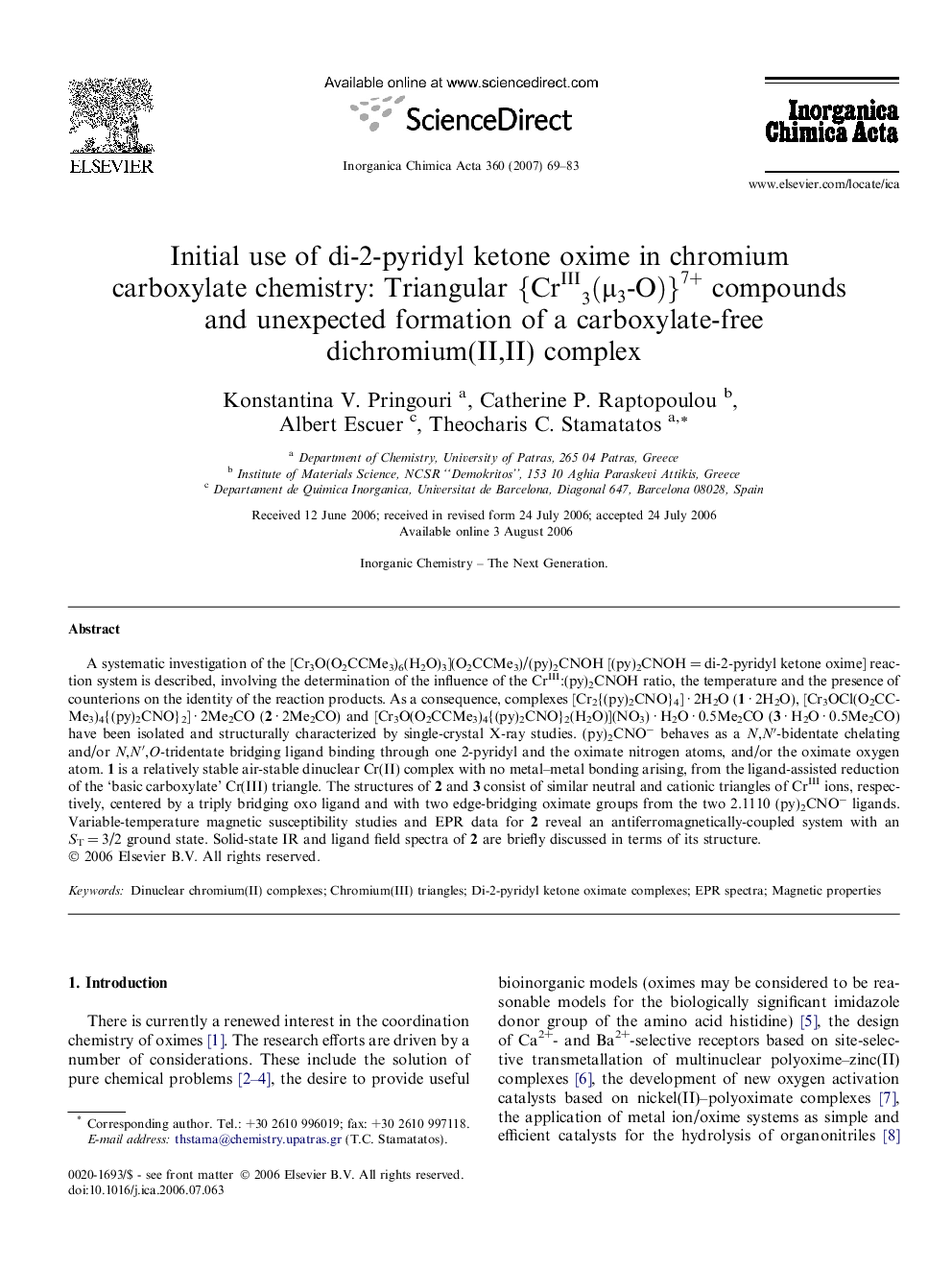| Article ID | Journal | Published Year | Pages | File Type |
|---|---|---|---|---|
| 1310826 | Inorganica Chimica Acta | 2007 | 15 Pages |
A systematic investigation of the [Cr3O(O2CCMe3)6(H2O)3](O2CCMe3)/(py)2CNOH [(py)2CNOH = di-2-pyridyl ketone oxime] reaction system is described, involving the determination of the influence of the CrIII:(py)2CNOH ratio, the temperature and the presence of counterions on the identity of the reaction products. As a consequence, complexes [Cr2{(py)2CNO}4] · 2H2O (1 · 2H2O), [Cr3OCl(O2CCMe3)4{(py)2CNO}2] · 2Me2CO (2 · 2Me2CO) and [Cr3O(O2CCMe3)4{(py)2CNO}2(H2O)](NO3) · H2O · 0.5Me2CO (3 · H2O · 0.5Me2CO) have been isolated and structurally characterized by single-crystal X-ray studies. (py)2CNO− behaves as a N,N′-bidentate chelating and/or N,N′,O-tridentate bridging ligand binding through one 2-pyridyl and the oximate nitrogen atoms, and/or the oximate oxygen atom. 1 is a relatively stable air-stable dinuclear Cr(II) complex with no metal–metal bonding arising, from the ligand-assisted reduction of the ‘basic carboxylate’ Cr(III) triangle. The structures of 2 and 3 consist of similar neutral and cationic triangles of CrIII ions, respectively, centered by a triply bridging oxo ligand and with two edge-bridging oximate groups from the two 2.1110 (py)2CNO− ligands. Variable-temperature magnetic susceptibility studies and EPR data for 2 reveal an antiferromagnetically-coupled system with an ST = 3/2 ground state. Solid-state IR and ligand field spectra of 2 are briefly discussed in terms of its structure.
Graphical abstractThe reactions of a triangular, oxo-centered trichromium(III,III,III) pivalate cluster with the popular ligand di-2-pyridyl ketone oxime under a variety of conditions lead to a novel, pivalate-free dichromium(II,II) complex via a ligand-assisted reduction of the chromium(III) starting material and to two mixed-ligand complexes containing the {CrIII,III,III3(μ3-O)}7+ core; the three new complexes are the first Cr members in the shown, rapidly expanding “periodic table” of metal/di-2-pyridyl ketone oximate complexes.Figure optionsDownload full-size imageDownload as PowerPoint slide
